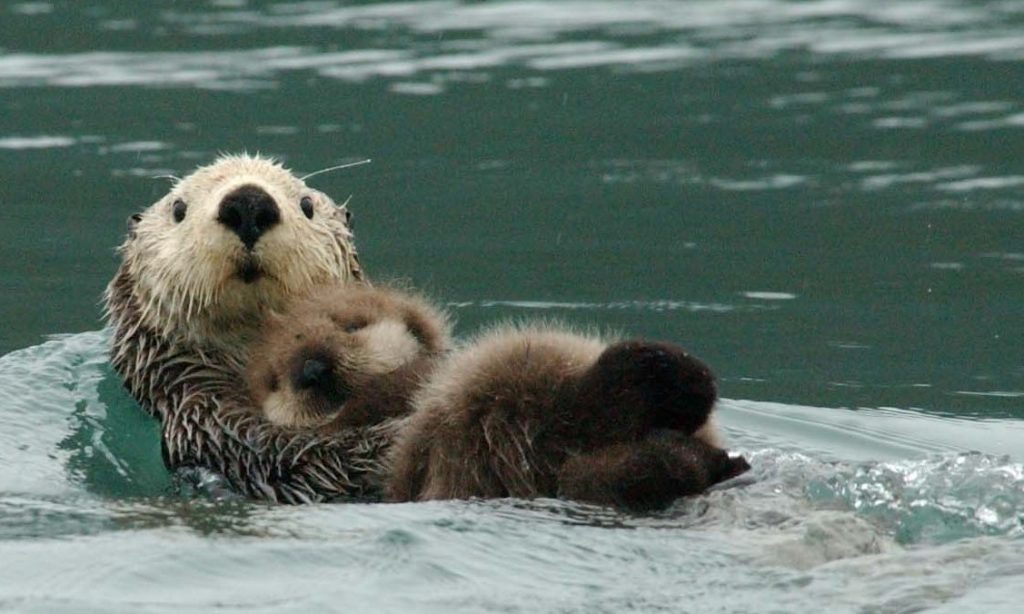
Dr. Randall W. Davis
Position / Title:
Professor, Department of Marine Biology
Affiliation: Texas A&M University at Galveston
Project Title:
Intra-annual movements and habitat-associations of sea otters in Prince William Sound, Alaska
Research Site:
North-eastern Prince William Sound,
Alaska, USA
For the past five years, we have been conducting research on northern sea otters (Enhydra lutris kenyoni) in Prince William Sound, Alaska. Our focus has been their seasonal movements, foraging behavior, prey selection, and habitat use in a soft-sediment bay. In addition, we have validated the use of image-identification using naturally occurring nose scars as a non-invasive technique for studying individual otters over periods of months to a couple of years. Our research differs from other studies of sea otters in that it is a long-term project with a planned duration of 10-15 years.
On August 09, 2005, northern sea otters were listed as threatened under the authority of the Endangered Species Act of 1973 throughout much of their range in southwest Alaska (Aleutian Islands, Alaska Peninsula coast, and Kodiak Archipelago). Our study area is on the eastern edge of the area of decline and is not included in the listing. Once containing more than half of the world’s sea otters, this population segment has undergone an overall population decline of at least 55–67% since the mid-1980s. In some areas within southwest Alaska, the population has declined by over 90% during this time period. Research conducted by the U.S. Fish and Wildlife Service and U.S. Geological Survey is focusing on the cause of the decline and possible mitigation. Our study’s detailed ecological information may be important in determining critical habitat if the decline continues and spreads eastward.
In situ field initiatives
Our study area is Simpson Bay, a remote area in northeastern Prince William Sound that is only accessible by boat or floatplane. We have access to a research facility near the study area that can accommodate up to 15 people. About 120 sea otters, including females with pups, territorial males, and juvenile otters, use Simpson Bay during the summer. This area of Prince William Sound is protected from severe sea conditions typical of the Gulf of Alaska, making research operations from skiffs safe and reliable for scientists. It also enables us to observe otters, record their behavior, take digital images for individual identification, record feeding dives, and identify prey items. In addition, we have been characterizing habitat in the bay by creating detailed bathymetric and benthic sediment maps. This has allowed us to pose hypotheses about how sea otters use habitat for different activities such as foraging and pup rearing and assess which physical and biological features are important for these activities. Over the next five years, we will continue these investigations with an emphasis on variability in the behavior, prey preference, and habitat use among individuals, age classes, and genders. In addition, our regular surveys will enable us to detect a decline in this population.
Education initiatives
For the first five years of this project, we received funding from Earthwatch Institute. Volunteers assisted us with data collection and helped support the project financially—this enhanced public awareness about sea otters and the potential threats to their existence. In addition, we trained graduate and undergraduate students from Texas A&M University. Outreach activities included lectures at high schools and museums, interviews, written material and digital images provided to print and electronic media, and a project website and annual class that trains volunteers on the rehabilitation of oiled sea otters. These activities will continue, and this year we will offer a two-week undergraduate university course on sea otter biology at our field site.
Conservation impact
Through publication in the scientific literature, our findings will benefit and be of interest to a wide range of academic and non-academic groups. Our results may have their most direct application to the dramatic decline in the sea otter population in other parts of their range, especially the Aleutian Islands. The U.S. Fish and Wildlife Service is requesting additional information to provide insight into the cause of the decline and how best to delineate critical habitat.